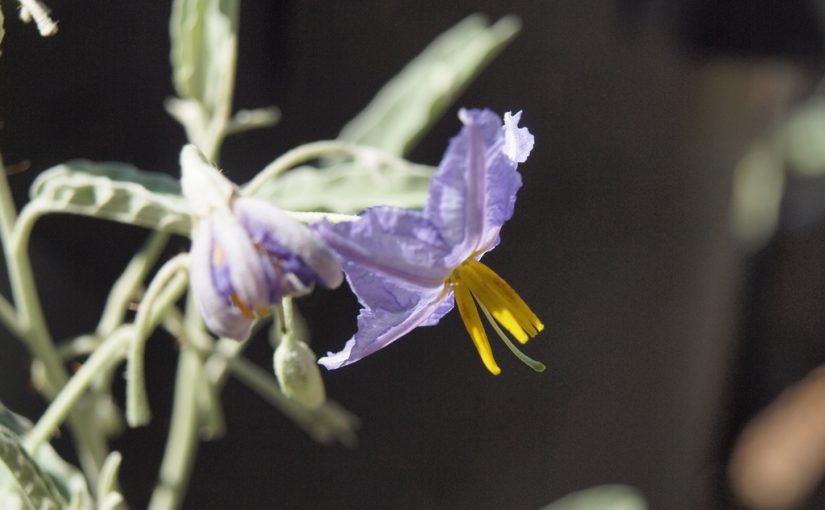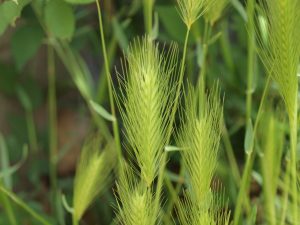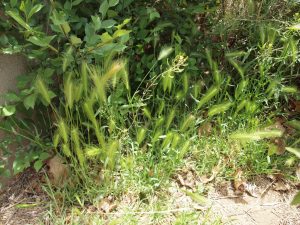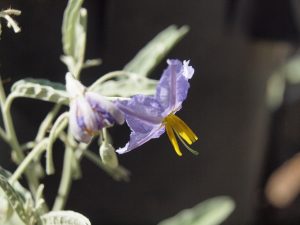
Silverleaf nightshade is a beautiful plant, but the beauty is a beast! The silver leaves are attractive, but their blue flowers with prominent yellow stamens attract a lot of attention.
This plant’s attractive characteristics hide some unattractive features. It is related to deadly nightshade and is itself listed among plants toxic to both humans and livestock. More than that, it is listed as a noxious weed in several states and acknowledged as a weed in most others. It is, however, a relative of tomatoes, tomatoes, and chiles. These are all members of the Nightshade family, Solanaceae, and most members of this family do contain toxic elements in some of the plant parts.
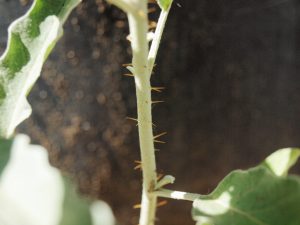
If that was not enough it produces spines on most above ground parts of the plants. While some plants produce more spines than others, and it has been reported that plants growing in humid climates produce few or no spines, for gardeners in the Southwest, this plant produces some spiny problems.
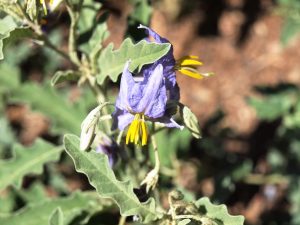
The unopened flower buds produce spines.
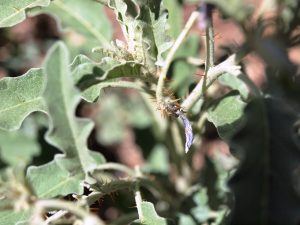
The spent flowers have spines. Spines can be found on leaves, buds, everywhere above ground!
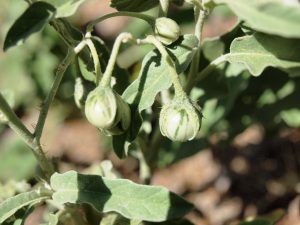
Even the fruit produce spines on their sepals.
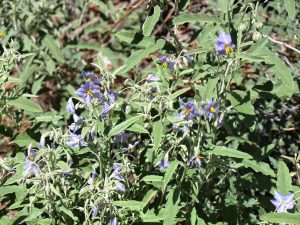
Silverleaf nightshade is a weed with a deep taproot that allows it to survive in very arid environments. Even a small piece of root left in the soil will generate a new plant. Plants in a clump are often attached to each other by underground stems, so that they can help support each other. This makes them survivors, it also makes them weeds.
As weeds we try to remove them, but be careful, the spines easily break after piercing your skin and become difficult to remove. These spines can sometimes even penetrate leather garden gloves!
So can there be anything good said about these plants? Well, they are beautiful, but the beauty is a beast! They are toxic, but like many toxic plants, the toxic principles can be curative when used properly. They were used medicinally and as beneficial plants by native people. They were even able able to use the ground, dried, fruit to curdle milk to make cheese.
Never the less, the beauty is a beast!
